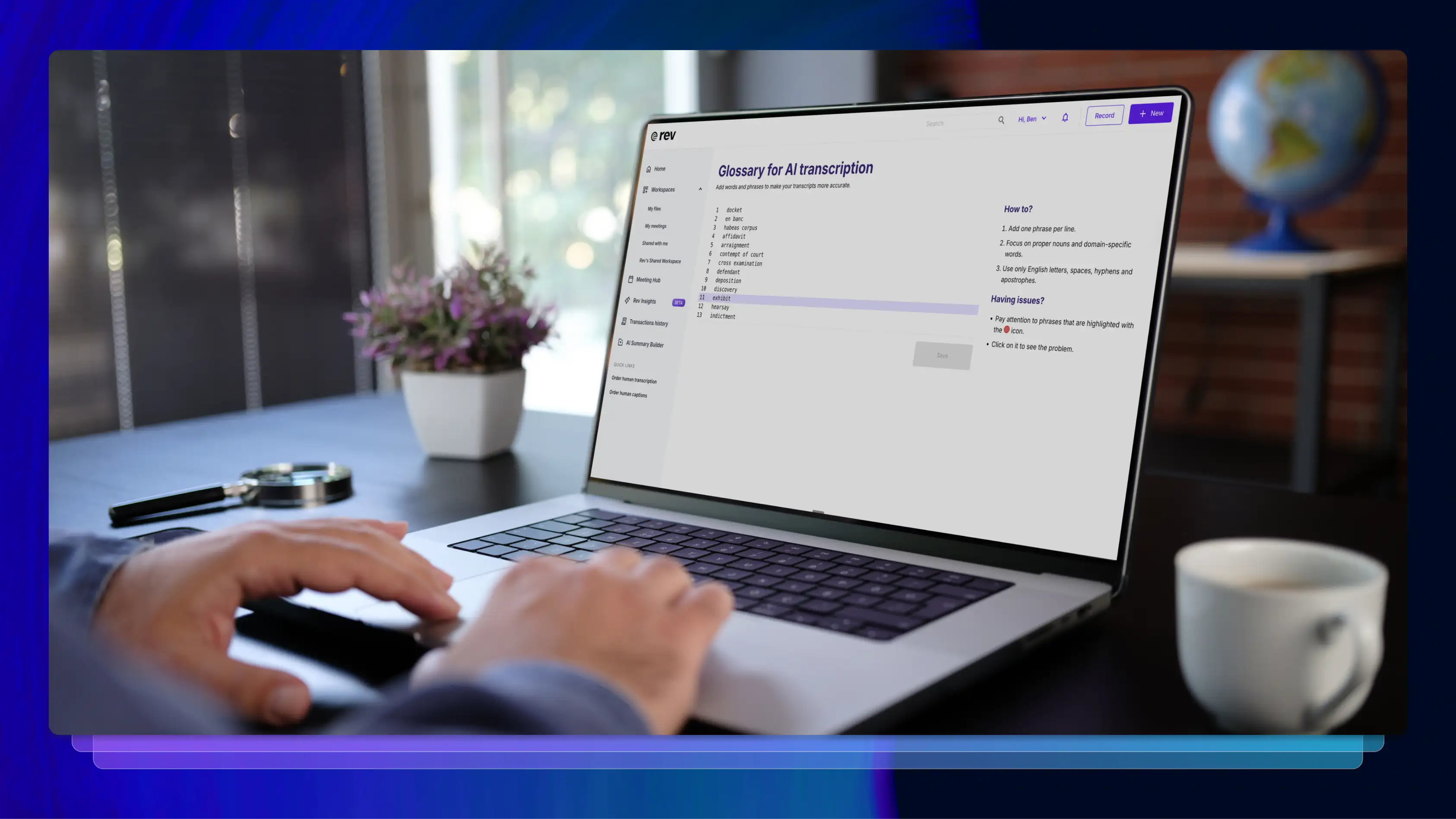Types of Evidence in Criminal + Civil Law
Attorneys use various types of evidence to present their cases in civil and criminal trials. Here are some of the most common kinds.
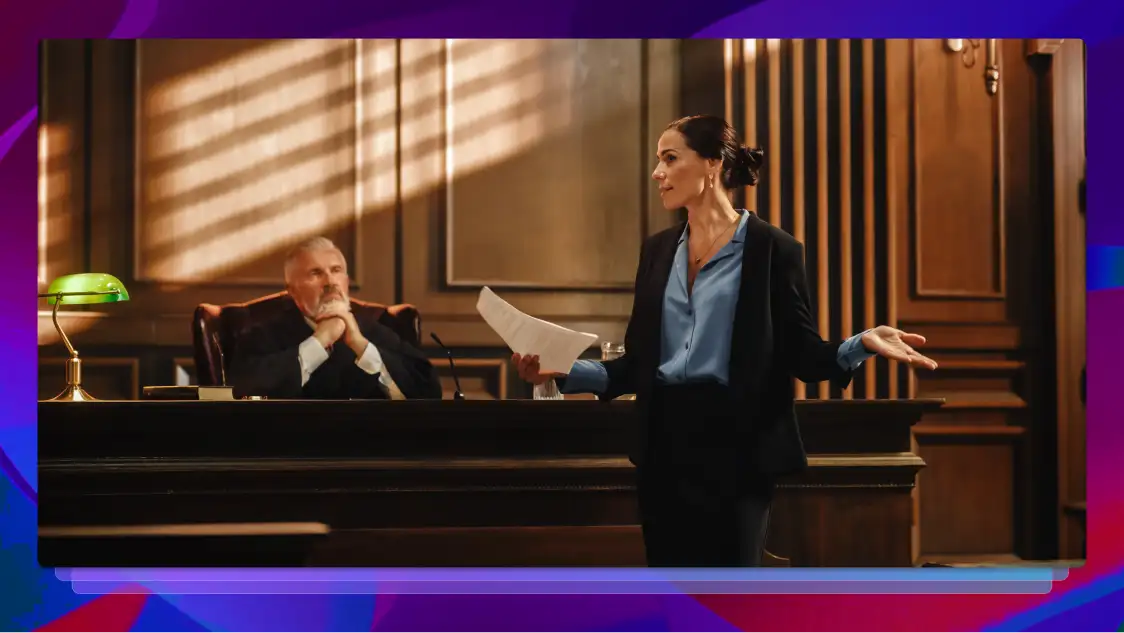
Criminal and civil cases both depend on one decisive factor: evidence. Whether you’re working with the plaintiff or the defense, you can’t build a case without tangible proof to back up your arguments.
That proof can take many different forms. From forensic information to eyewitness testimony, legal professionals often rely on a plethora of proofs to corroborate their claims. Here, we’ll look at 19 different types of evidence, rules on their admissibility in criminal and civil law, and how technology can help lawyers and their aides root out critical information more quickly.
1. Direct Evidence
Direct evidence directly demonstrates a fact that a lawyer is trying to prove in a criminal or civil case. Video footage, eyewitness testimony, and audio recordings are some of the most common forms.
This type of evidence carries much greater weight in a courtroom, as it leaves less room for doubt than circumstantial evidence. However, direct evidence is not irrefutable. Eyewitnesses can be cross-examined, for instance, and even video or audio can be faked.
2. Circumstantial Evidence
Any indirect forms of legal evidence fall under the broader category of circumstantial evidence. Fingerprints at a crime scene or financial records indicating fraud — these types of evidence suggest a connection between the accused and the crime. In civil cases, attorneys might draw on email exchanges or company documentation to demonstrate neglect.
Any of the following types of evidence we’ll discuss fall into one of these first two categories, depending on the specific details of the case and the nature of the evidence itself. They can also be further categorized as individual evidence (implicating a specific person) or class evidence (implicating a class of people to help narrow down potential suspects).
3. Physical Evidence
This is the tangible or real evidence from the crime scene. It could include anything from a weapon to a tire mark on the road. Damaged property could serve as evidence of neglect in a civil case against a construction company, or a clothing item left behind may implicate a murder suspect.
4. Exculpatory Evidence
This is any type of evidence that reduces a defendant’s culpability or clears them of guilt entirely. For example, DNA evidence might prove that someone else was responsible for a crime. While more common in criminal cases, exculpatory evidence can also appear in civil cases, such as medical records proving a plaintiff’s injury existed before an accident.
Under the Brady Rule, prosecutors are legally required to disclose exculpatory evidence to the defense.
5. Prima Facie Evidence
Prima facie — or “on the first impression” — describes any evidence sufficient to prove a fact or establish a case unless rebutted by contrary evidence. It’s often used to establish an initial burden of proof, particularly in civil cases. For instance, a signed contract may be enough to verify that an agreement existed in a breach of contract case.
6. Testimonial Evidence
Testimonies are statements made under oath — either in court or via out-of-court depositions — by witnesses, experts, or involved parties. This type of evidence is widely used in criminal and civil cases and may involve eyewitness descriptions, expert accounts, or any statement intended to clarify aspects of the case.
Depositions are especially common during the discovery phase in civil cases, when legal teams may compile hours of testimony that must be transcribed and summarized to help in case preparation and investigation. This is where fast and accurate legal transcription tools like Rev can be invaluable for speeding up the process without sacrificing precision.
7. Expert Witness Evidence
As a subset of testimonial evidence, expert witness accounts help to verify or corroborate specific aspects of a criminal or civil case. For instance, a forensic expert might address questions about DNA analysis, or a financial expert may explain the causes of certain economic losses in a civil lawsuit.
8. Demonstrative Evidence
Demonstrative evidence is designed to explain the facts and details of a case rather than prove them directly. For instance, lawyers may use photos, charts, models, animations, or reenactments to illustrate how an event may have played out or how other types of evidence may be connected to the accused.
9. Forensic Evidence
Forensic evidence often plays a vital role in criminal trials. It’s also known as scientific evidence, as it relies on scientific methods to analyze physical evidence from a crime scene. Fingerprints, DNA analysis, toxicology reports, and even ballistics are all common types of forensic evidence, which may prove highly convincing in certain types of arguments thanks to their reliance on objective methods and data. There are even specific digital forensic tools out there to help you manage this type of evidence.
10. Hearsay Evidence
Out-of-court statements to parties involved in a trial are considered hearsay evidence and are generally not admissible in court. However, courts do allow some exceptions, such as when a witness makes a statement while believing their death is imminent.
11. Corroborating Evidence
Corroborating evidence is any type of evidence used to bolster existing claims or add validity to other evidence. For example, a text message confirming a verbal agreement may corroborate a party’s account in a contract dispute, or surveillance footage might confirm an eyewitness’s description of a suspect in a robbery case.
12. Admissible Evidence
Ultimately, the judge in a particular case decides whether specific evidence can be admitted in court. To ensure a fair trial, admissible evidence must meet the legal standards of relevance, reliability, and authenticity. Here’s what those terms mean when it comes to admissible evidence:
- Relevant: The evidence clearly relates to the case and helps prove or disprove related claims.
- Reliable: Witness testimony must be trustworthy and accurate, from a proven, authoritative source. Any material evidence must be collected, handled, and preserved with proper methods to avoid tampering or corruption.
- Authentic: The party presenting the evidence must be able to provide sufficient proof that the evidence is what they claim it to be. For instance, an expert may be required to verify a signature or voice that the prosecution claims belongs to the defendant.
13. Inadmissible Evidence
Any evidence that doesn’t meet the standards of relevance, reliability, and authenticity is considered inadmissible. Judges may dismiss evidence for many reasons, including unfair prejudice, illegal means of producing the information, or violating attorney-client privilege.
14. Digital Evidence
Increasingly common nowadays, digital evidence is any electronic data collected and analyzed to support legal proceedings. Emails, text messages, computer files, and even social media posts or GPS data from a defendant’s smartphone can be admissible when relevant to the case. However, ensuring data authenticity and integrity is vital before it can be admitted in court.
15. Character Evidence
Character evidence speaks not directly to the specifics of a case but to a defendant’s broader tendencies and traits. Examples of past violent behavior might establish a pattern of aggression, for instance. This type of evidence is typically prohibited in court but may be allowed in some cases.
16. Habit Evidence
Unlike character evidence, which speaks more broadly to a person’s behavior or tendencies, habit evidence demonstrates a person’s regular response to a specific situation. In general, it demonstrates how a person would respond in similar circumstances. An attorney could also use a person’s routine habits or schedule to demonstrate that they couldn't have been at the crime scene at a specific time.
17. Documentary Evidence
Documentary evidence includes any written materials, such as emails, invoices, or medical records. Photos, videos, and audio recordings also fall under this category.
Transcripts are an especially common form of documentary evidence in criminal and civil cases, whether of depositions or in-court proceedings. While creating these verbatim records was once highly time-consuming, AI-powered technology like Rev can now produce highly accurate, certifiable transcripts in a fraction of the time.
18. Statistical Evidence
Statistics are widely used to prove or challenge claims in court. Expert witnesses may use data to demonstrate patterns, probabilities, or correlations. For example, statistics may show a pattern of biased hiring practices in a civil case, while recidivism rates may indicate the likelihood that a convicted felon will re-offend.
19. Insufficient Evidence
Finally, we have insufficient evidence, which is not so much a type of evidence, but rather a classification used when there isn’t enough of it. Our legal system rests on the principle of “innocent until proven guilty,” so the prosecution bears the burden of proof in any civil or criminal case. If they provide insufficient evidence to demonstrate guilt beyond a reasonable doubt, the case will be dismissed, or the defendant will be acquitted.
Levels of Evidence
In a courtroom, the strength of a criminal or civil case is directly related to the reliability of the evidence on display. Outcomes hinge on whether attorneys can present strong enough proof to persuade a judge or jury to adopt their viewpoint.
While presenting more evidence may bolster your case, far more important is where it fits within the larger hierarchy of evidence. For instance, direct evidence, such as eyewitness testimony, holds more sway than hearsay or inferences drawn from circumstances. Likewise, strong forensic evidence, official records, surveillance footage, or the testimony of an expert will generally hold more value in court.
That said, secondary or lower levels of evidence can still prove valuable when used in conjunction with other forms. For instance, a prosecutor might present evidence to support motives in a criminal case, and then support it with phone records.
Rules on Evidence Admissibility
Evidence admissibility varies by the type and nature of the case. In general, there are stricter admissibility standards for the types of evidence used in criminal law, given the higher stakes involved. Civil cases may offer broader expectations for hearsay or character evidence, for example.
Admissibility also depends on the level of courts involved in the case. Federal courts must adhere to the Federal Rules of Evidence, while state and municipal courts may have their own standards. Likewise, international law applies its own set of admissibility guidelines.
In general, all cases agree on one core standard: Evidence must be relevant to the case at hand to be used in court.
Discover Evidence Faster
Advanced technology is only becoming more integral to the process of gathering and presenting evidence. GPS logs, metadata from phone apps, facial recognition technology — the opportunities are growing by the day. Blockchain technology, for instance, is now being used to create verifiable, immutable records of how digital evidence is stored and transferred from one party to the next. Each party can use a cryptographic key to access evidence without the ability to alter it, providing a rock-solid chain of custody.
Tech can even improve more traditional forms of evidence gathering. Body cams are now widely used to capture real-time video, and cloud technology facilitates fast and secure file sharing. Meanwhile, tools like Rev accelerate legal professionals’ ability to transcribe and summarize depositions and other court hearing types to quickly find relevant evidence. These and other AI-powered applications will transform legal work, now and in the years to come.
Separate Legal Fact From Fiction
Sorting through various types of evidence is a vital yet often time-consuming component of legal work. Some forms of evidence gathering and verification just take time, no matter how efficient your processes. But many tasks — like transcribing depositions or quickly summarizing and reviewing them — don’t have to eat up endless hours that could be better spent working on strategy.
With Rev, you can streamline some of the most tedious aspects of your evidence-gathering process to save your time and mental energy for the more critical tasks. Try out Rev’s smart law firm solutions today, and separate fact from fiction more efficiently in your cases.


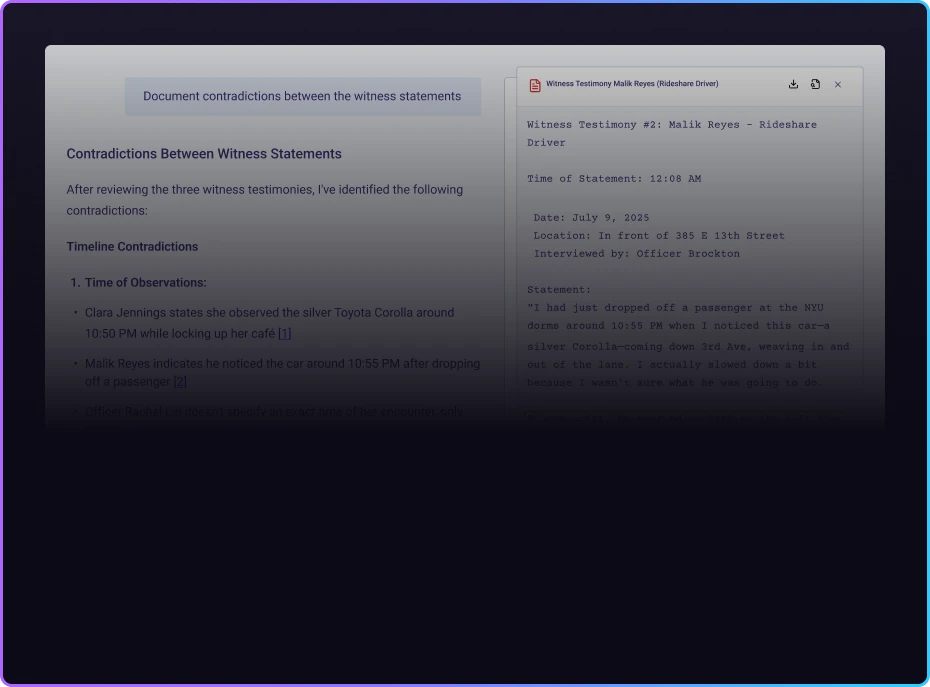

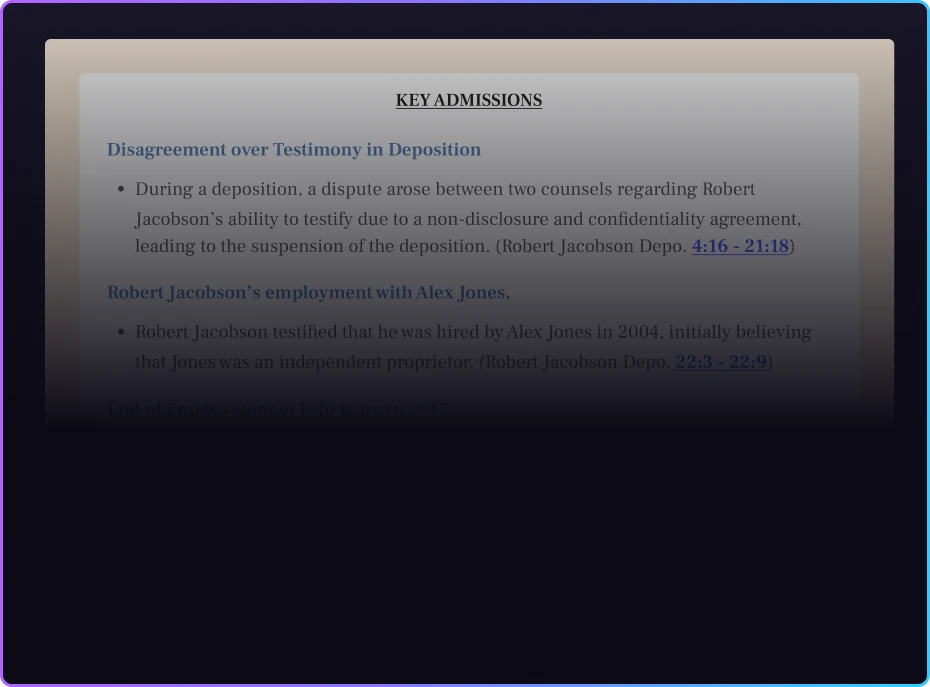


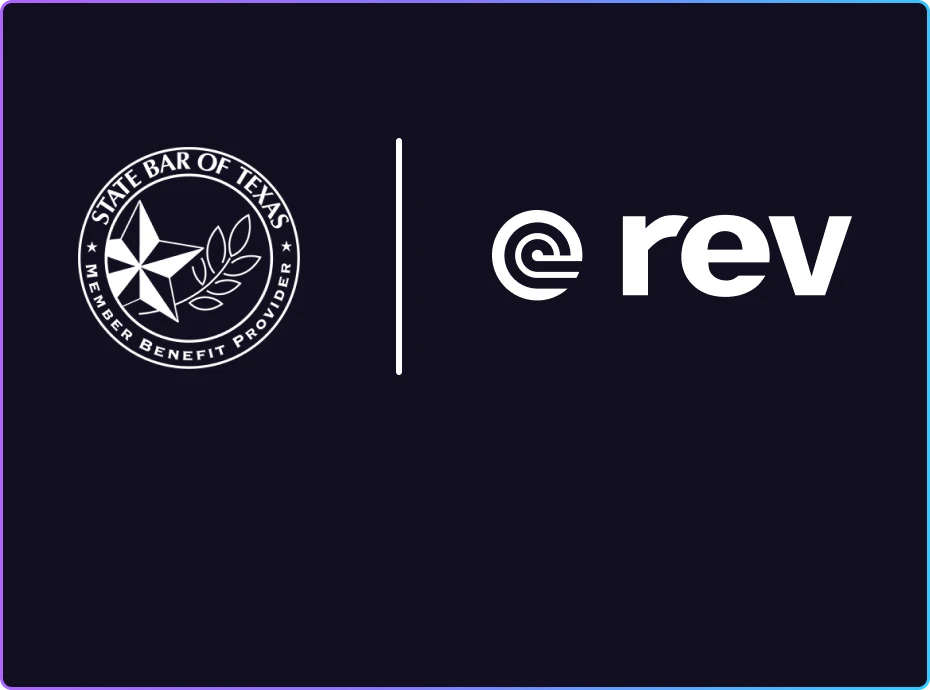



.webp)
